Having a successful business is every employer's dream, and employee engagement is always at the heart of this success.
However, most companies forget about having a great company culture and just focus on engaging their employees. In this blog we’ll discuss how employee engagement and company culture go hand in hand in creating an engaged and productive workforce.
We’ll cover:
- What is Employee Engagement?
- What is Company Culture?
- Top Signs of Poor Company Culture
- How Does Poor Company Culture Affect Employee Engagement
- How to Create a Culture of Employee Engagement
What Is Employee Engagement?
Employee engagement is the emotional commitment an employee has to an organisation and its goals.
This emotional commitment means engaged employees actually care about their work and their company. They don't work just for the pay, but work on behalf of the organisation's goals, ultimately creating more success for the company.
Read more on Employee Engagement: 📖 What is Employee Engagement? The Ultimate Guide
What Is Company Culture?
Company culture refers to the attitudes and behaviours of a company and its employees. It encompasses a variety of elements, including working environment, company mission, leadership style, values and goals.
Great company culture sets the foundations for real, tangible business growth. It's based on honest, productive conversations and helps companies to identify issues and collectively form solutions to any problem.
Read more on Company Culture: 📖 Company Culture: The Ultimate Guide
Top Signs of a Poor Company Culture
Having a great company culture is essential in today’s working world. Winning culture also improves employee engagement, leading to better retention and better productivity between employees.
Your culture can either be your greatest strength or biggest weakness. With this in mind, let’s have a look at the top signs of a poor company culture and how you can solve them.
High Turnover
Having high employee turnover in your organisation is almost always a sign of poor company culture. Not only will it drive employees away, the word will also be spread to those that are job seeking, who will then be less likely to apply for a job at your company.
In fact, more than a third of US employees say they would turn down the perfect opportunity if the culture wasn't right. If this doesn't make you rethink your company culture, I don’t know what will!
How to Solve This Problem
If you’re experiencing high turnover, the first thing you should do is identify the root of the problem. Try and ask employees politely their reason for leaving. Gathering this feedback will help you to improve your culture.
You should also talk to long-term employees, this will give you a sense of what’s kept them around. Consider implementing an employee satisfaction survey and analyse the results. Remember, don’t forget to act on your feedback!
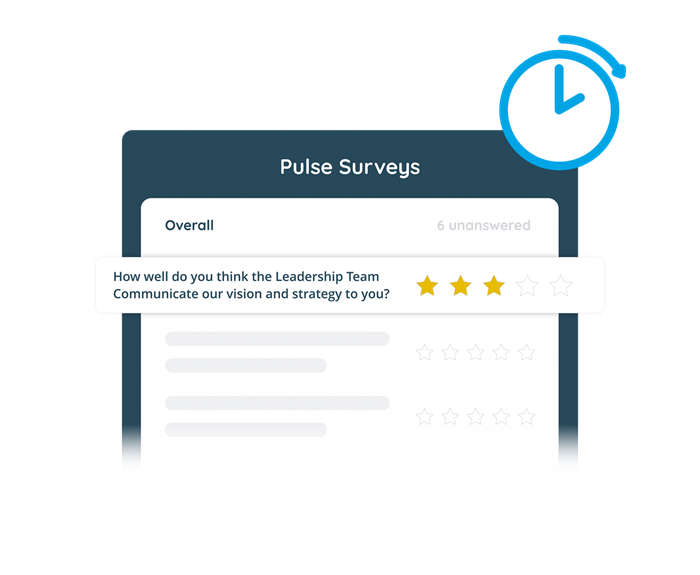
Failure to Recognise and Reward Employees
Recognition in the workplace is a vital contributor to employee engagement and happiness. Although traditional recognition practices seem simple, they become more complex as workplaces modernise. Ultimately, feeling appreciated is integral to the employee experience.
However, only occasionally rewarding a few employees will make the rest of your workforce feel undervalued and underappreciated. This can lead to a negative company culture founded on unhealthy competition between employees.
How to Solve This Problem
The first thing to do is to have conversations with line managers about recognising employees more often.
Additionally, you can put some time in weekly meetings for employees to recognise and appreciate other team members and implement employee spotlights.
Alternatively, if you already have a company intranet, why not use your employee recognition software to celebrate your colleagues fantastic hard work?
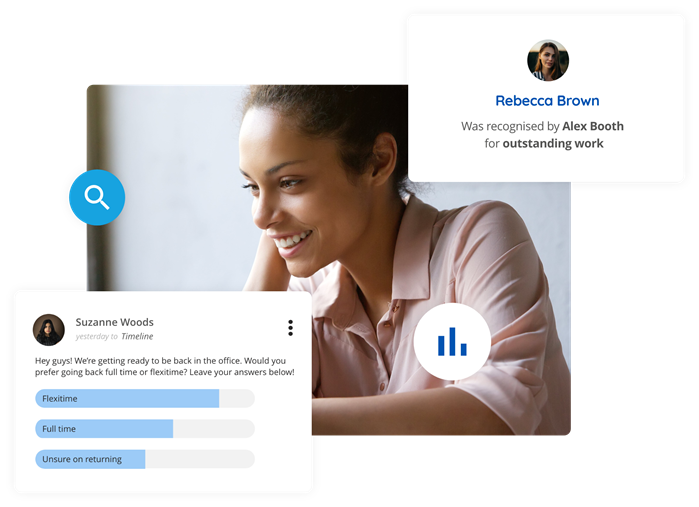
Absence of Core Company Values
It's arguable that having no company values is the most concerning sign of a bad company culture.
Core values are the driving force of an organisation and not having any means tat your culture is likely to have no sense of direction.
How to solve this problem
Your leadership should start by drafting out a list of core values for your company. These should be a list that will help the business to achieve its goals but also things that employees really care about.
Once you have your values in place, you should always refer back to them in the hiring process to ensure each employee you onboard shares the same values as your team.
Recommended Reading: 📖 Internal Communication Plan: Step by Step Guide & Template
Office Gossip
Gossip certainly isn't appropriate in an office environment. It leads to unwanted cliques that will eventually divide your workforce and turn employees against each other.
How to Solve This Problem
If you notice any gossip happening in your company, you should tackle the problem head on. Try to speak to individuals who seem to be most involved and privately speak to them about it in a one-to-one session. This will create a culture of openness between your employees and managers.
How Does Poor Company Culture Affect Employee Engagement?
To put it simply, employee engagement is a direct outcome of great company culture.

This is because high-performance cultures clearly outline behaviours that are healthy and supportive. Employees clearly understand their culture and what is expected of them. They feel connected, involved and supported. Therefore, they feel ENGAGED!
Company culture and employee engagement are very closely tied. So, if you have a poor company culture, your employees will most likely be disengaged.
We’ve already highlighted some signs of poor company culture, but let’s take a look at the factors that can affect employee engagement:
Poor Transparency
A key component of a collaborative work culture is ‘Transparency’. It helps employees feel connected to the workplace and get a sense of job security and keeps them focused on performance.
Unhappy Employees
People want to feel that they are part of the organisation and involved in activities; empathy helps in building that relationship. Not just this but empathy also allows teams to collaborate and work effectively.
Outside Implications
A strong engagement programme has positive implications outside the organisation. It ensures a powerful brand reputation for potential employees and clients, whether via informal word-of-mouth or a formal alumni cell.
Ultimately, any innovative and effective engagement plan's success depends on the people's culture to encourage initiative and provide them the freedom to express themselves.
Poor Leadership
Leading by example is a robust behaviour and critical for organisational culture and success. Treating everyone with respect regardless of their designation builds a healthy workplace environment and gives confidence to employees. Influential leaders are those who spend time championing the culture and values of the organisation.
How to Create a Culture of Employee Engagement
Since employee engagement is key to improving productivity and loyalty in the workplace, creating a culture of employee engagement is vital.
Let’s dive in to see how you can do it:
1. Create an Employee Action Plan
An employee engagement action plan is a process that an organisation must come up with to identify and prioritise their actions based on their employee engagement rates in the workplace.
A company should be able to identify quick and simple changes to demonstrate to its employees that the organisation is determined to set in an action plan on receiving any form of feedback about levels of employee engagement.
More often than not, companies spend time and resources on HR initiatives without thinking strategically about them. QuestionPro surveyed and interviewed HR leaders across the globe and a massive 50% of them said, they rarely if ever do anything meaningful with the results of their surveys.

If you would like to read more on creating an employee action plan read our guide:
Employee Engagement Action Plan Guide
2. Express Appreciation
A TINYpulse report highlights that 21.5% of workers who don’t feel recognised for their hard work have been actively looking for a new job in the past three months, as opposed to 12.4% of workers who do feel recognised.
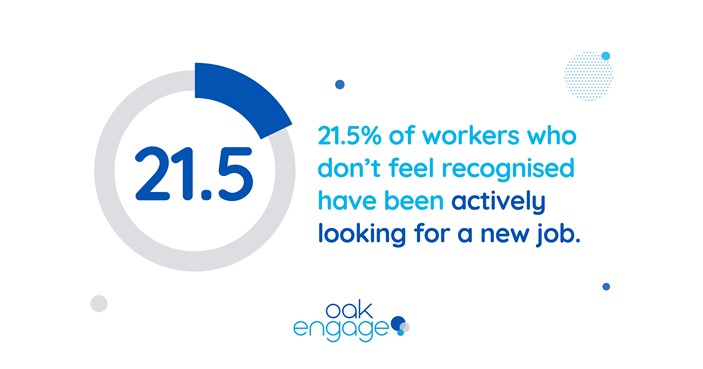
Building a culture of appreciation is critical to your business success.
3. Focus on Employee Development
There are many reasons job seekers apply for and accept a position, like salary and benefits. But, many workers also want the opportunity to grow their career. One Gallup poll found that 87% of millennials (and 69% of non-millennials) view development as important in their jobs.
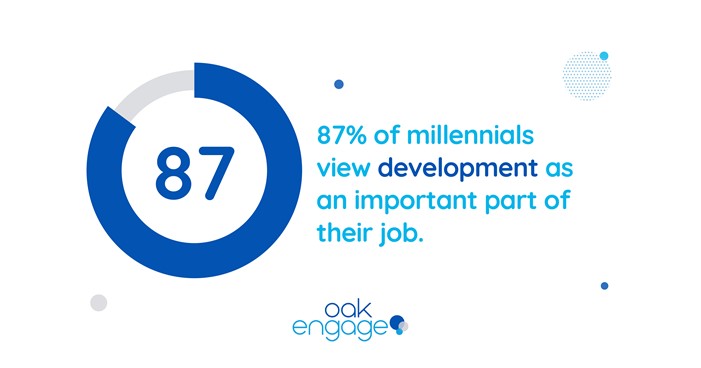
Employees want to develop their skills and continue challenging themselves.
4. Don’t Micromanage
If employees are told exactly what to do and how to do it, they won’t have the time or motivation to engage with the work. They’ll be more like robots. Employees can’t be engaged if they don’t have freedom in how to do their jobs.
Micromanaging can be damaging to your business. One business found that micromanaging resulted in 68% of employees saying their morale was dampened and 55% saying it led to a decrease in productivity. Lost morale and productivity leads to actively disengaged workers.
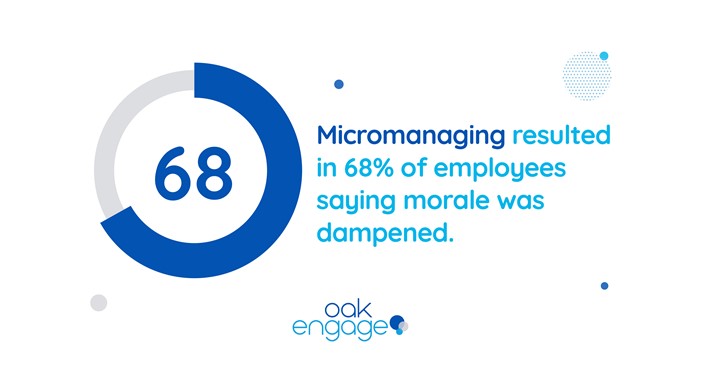
5. Don’t Skip Onboarding and Training
If employees aren't onboarded properly, they will struggle to establish their responsibilities. This will lead to confusion, frustration and disengagement.
Onboarding and training new hires are some of the most important steps you can take to ensure employees are engaged at work. One SHRM survey reported that one-third of new hires left their jobs after only six months. You have less than six months to get employees engaged with their position.
Download our Employee Engagement Checklist if you’re struggling to engage your employees.




